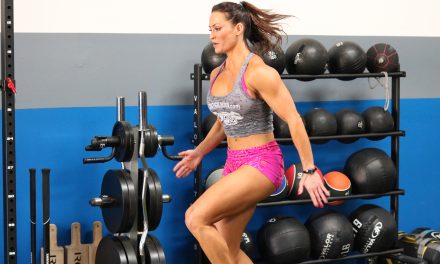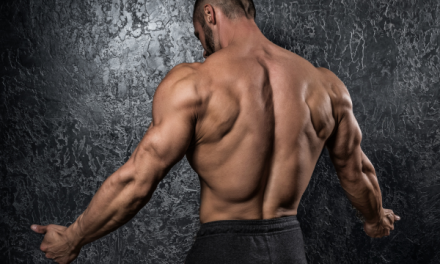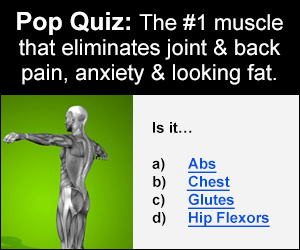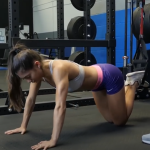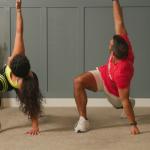In today’s rush-rush world, feeling tired all the time seems almost normal.
We’ve all had those mornings where we can barely get out of bed, chug down a coffee to wake up, and still end up feeling worn out by noon.
But what if there was a natural way to keep our energy up without always relying on that cup of joe?
Say hello to yoga.
This isn’t just an old-school way of twisting and stretching; it’s like a secret weapon against feeling sluggish.
Yoga is all about connecting your mind, body, and spirit in a way that wakes you up from the inside out.
Instead of the quick buzz and crash you get from caffeine, yoga helps you find a steady stream of energy by teaching you to breathe properly, move your body in specific ways, and calm your mind.
It’s like hitting the refresh button every time you practice.
So, let’s dive into how yoga can change the game for keeping energized, showing us that maybe we don’t need that extra cup of coffee after all.
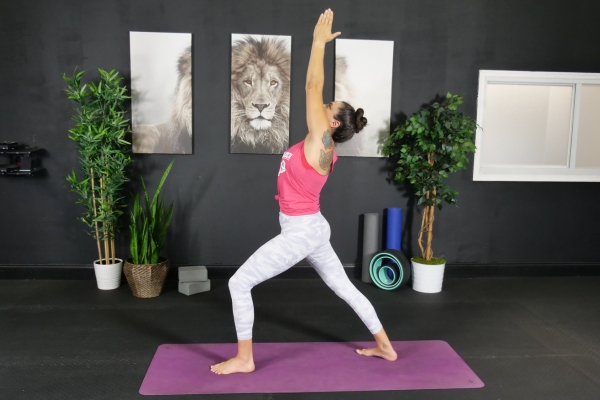
How Does Yoga Increase Energy?
Aristotle once said, “The energy of the mind is the essence of life,” a statement that beautifully encapsulates the essence of yoga.
Yoga is not just about bending, stretching, or striking a pose; it’s an intricate combination of body and breath that nurtures the soul, energizes the body, and calms the mind.
But how exactly does yoga transform our energy levels?
Oxygen: The Breath of Life
Yoga teaches us to breathe deeply, to fill our lungs and cells with life-giving oxygen.
This isn’t just about catching your breath; it’s about drenching your cells in a rejuvenating O2 spa.
Every deep inhalation and exhalation in yoga ensures that more oxygen reaches our cells, providing them with an instant vitality boost.
The Joy of Endorphins
When we engage in yoga, especially in poses that challenge us, our bodies release endorphins—nature’s feel-good chemicals.
These endorphins lead to a natural high, a surge of energy that feels uplifting without the subsequent crash that sugar or caffeine might induce.
A Tonic for the Organs
Yoga serves as an internal massage for our organs, stimulating and enhancing their function.
From improving digestion to ensuring efficient energy conversion, yoga supports our body’s systems in functioning at their optimal levels, translating into more vitality and less fatigue.
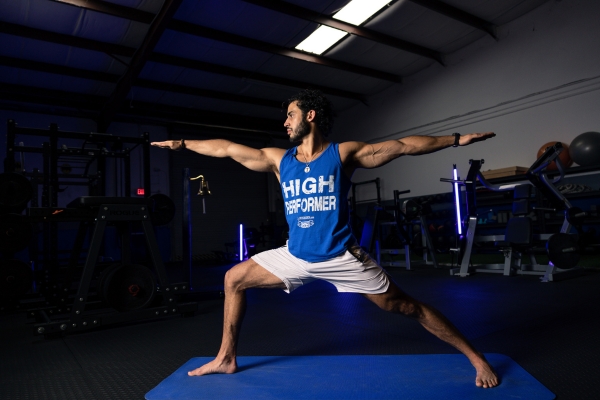
How to Increase Your Energy with Yoga Poses
Yoga offers a number of poses designed to energize and rejuvenate.
Here are a few key postures that are particularly effective in boosting energy levels:
Sun Salutations (Surya Namaskar)
Sun Salutations, or Surya Namaskar, are a dynamic series of 12 yoga poses that are designed to energize the body and mind.
Doing them, especially at the start of your day, can really set a positive and vibrant tone for whatever comes next.
Here’s a simple guide on how to perform this energizing flow:
1. Mountain Pose (Tadasana)
Stand with your feet together, arms by your side. Breathe deeply, stand tall, and prepare your mind and body for the sequence.
2. Upward Salute (Urdhva Hastasana)
Inhale, lift your arms overhead, and gently arch your back. Keep your palms together, stretching towards the sky.
3. Standing Forward Bend (Uttanasana)
Breathe out and bend at your hips to lean forward, lowering your hands towards the floor next to your feet. If the floor feels too far away, that’s okay—just reach down as far as you feel comfortable.
4. Lunge Pose
Inhale, step one leg back, and lower your knee to the ground, lifting your chest and looking up. Ensure your other knee is directly over your ankle.
5. Plank Pose
Exhale, step your other leg back to join the first, keeping your body in a straight line from head to heels. Engage your core and hold your breath for a moment.
6. Eight-Point Pose (Ashtanga Namaskara)
Gently bring your knees, chest, and chin down to the floor while keeping your hips elevated and your elbows tight to your sides. This forms a respectful eight-point salute to the ground.
7. Cobra Pose (Bhujangasana)
Breathe in, glide forward, and raise your chest into Cobra pose, with your elbows bent and held near your sides. Softly curve your back and lift your gaze upward.
8. Downward-Facing Dog (Adho Mukha Svanasana)
Breathe out, raise your hips upwards and backwards to create an inverted V-shape with your body. Push firmly with your hands and feet against the ground, aiming to elongate your spine.
9. Lunge Pose
Inhale, step forward with the same leg you moved back first into a lunge. Lift your chest and look up. The other knee goes to the ground.
10. Standing Forward Bend (Uttanasana)
Exhale, bring your other foot forward next to the first one, and fold into a forward bend.
11. Upward Salute (Urdhva Hastasana)
Inhale, rise up with your arms overhead and gently arch your back. Look up towards your hands.
12. Mountain Pose (Tadasana)
Exhale, return to a standing position with your arms by your side, grounding yourself in Mountain Pose.
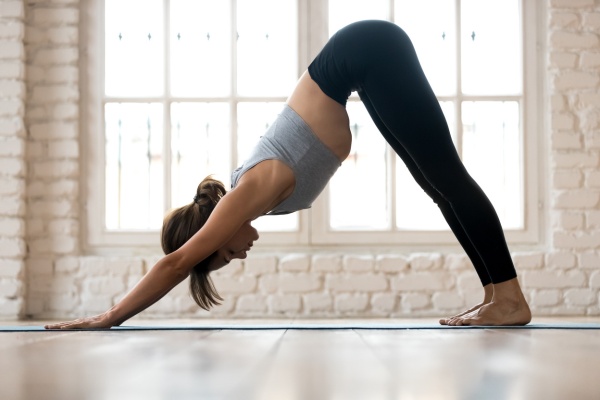
Downward-Facing Dog (Adho Mukha Svanasana)
This well-known pose rejuvenates the brain by enhancing blood flow, stretching the back, hamstrings, and calves, and acting as a mini energy shot for the mind.
To do the Downward-Facing Dog:
- Start on all fours on a comfy mat, with your hands a bit in front of your shoulders and knees under your hips.
- Breathe out and lift your butt up high, like you’re aiming to make an upside-down V shape with your body.
- Your knees can be a little bent to start, and your heels don’t have to touch the ground right away.
- Press firmly into your hands and feet, spreading your fingers wide. Make sure you’re not shrugging your shoulders up to your ears—keep your neck long.
- Hang out in this pose for a few breaths. You should feel a good stretch in your back and legs, and you might find your head feels clearer, too, thanks to the blood flow.
- To get out of the pose, you can either go back to all fours or walk your feet up to your hands and slowly stand up.
Camel Pose (Ustrasana)
An invigorating backbend that opens up the chest and improves spinal flexibility, thereby boosting circulation and revitalizing the body.
To get into Camel Pose:
- Begin by kneeling on a yoga mat, positioning your knees apart at hip width, and placing your hands on your lower back for support.
- Push your hips forward, slowly arch your back, and reach for your heels with your hands, if possible. If not, just keep your hands on your lower back.
- Make sure your chest is pushed out and up, and your shoulders are rolled back.
- Keep your neck neutral or gently drop it back if it’s comfortable, but don’t strain.
- This pose should feel like a good stretch across your chest and front of your body while your spine bends backwards.
- Hold this position for a few breaths, feeling the chest open and the spine flex.
- To come out, slowly bring your hands back to your lower back for support as you straighten up.
Wheel Pose (Chakrasana)
A deeper backbend that stimulates the thyroid gland, crucial in the body’s energy production process.
To perform the Wheel Pose:
- Start by lying on your back on a yoga mat, knees bent, feet flat and close to your sit bones, and hands placed beside your head, fingers aiming toward your shoulders.
- Pressing firmly into your palms and feet, lift your hips and back off the floor, pushing your chest outward and upward, arching your spine as much as comfortable.
- Try to straighten your arms and legs as much as your flexibility allows, creating a strong curve in your back.
- Keep your neck relaxed and allow your head to hang gently if it doesn’t strain your neck.
- This pose deeply stretches the chest and front of the body while strengthening the arms, legs, and spine.
- Hold the pose for a few breaths, then carefully bend your arms and legs to lower yourself back onto the mat.
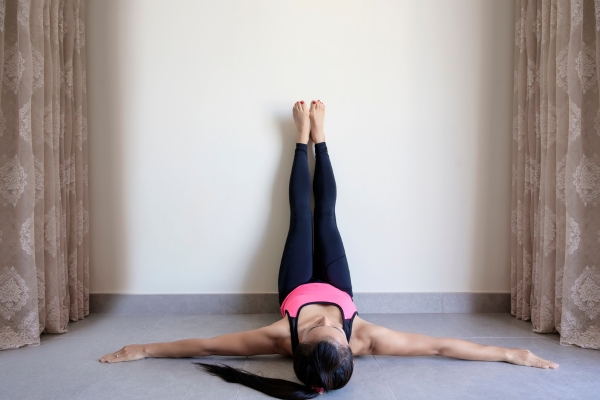
Legs-Up-The-Wall Pose (Viparita Karani)
Though restorative, this pose refreshes the legs and boosts circulation, leaving you feeling rejuvenated and energized.
To practice the Legs-Up-The-Wall Pose:
- Choose a cozy spot next to a wall. Position yourself sideways next to the wall, then gently recline and raise your legs up the wall.
- Your body should form an L shape, with your back on the floor and legs extended vertically up the wall.
- Scoot your hips as close to the wall as feels comfortable, allowing your back and head to rest flat on the ground.
- Let your arms rest by your sides, palms facing up, or place them on your belly.
- Close your eyes, relax into the pose, and breathe deeply, allowing the gravity to gently drain the fatigue from your legs and rejuvenate your circulation.
- Stay in this calming position for 5 to 15 minutes, then slowly bend your knees, slide your legs down the wall, and roll to one side before pushing yourself up.
Standing Forward Bend (Uttanasana)
By increasing blood flow to the brain, this pose enriches it with a fresh oxygen supply, stretching the hips, hamstrings, and calves in the process.
To do the Standing Forward Bend (Uttanasana):
- Start by standing tall with your feet hip-width apart.
- Inhale deeply, and as you breathe out, bend from your hips to lean forward, folding at the waist.
- Let your hands touch the floor or grab onto your elbows if reaching the ground is challenging.
- Keep your knees slightly bent to avoid strain if your hamstrings are tight.
- Allow your head to hang heavy, releasing any tension in your neck.
- Focus on lengthening your spine with each inhale and deepening the fold with each exhale, aiming to bring your chest closer to your legs over time.
- To come out of the pose, gently roll up to standing, stacking one vertebra at a time, keeping your head to come up last.
Wrap-Up and Key Points
Yoga intertwines breath with movement, creating a mesmerizing dance of vitality that can effectively replace the afternoon coffee with a session on the mat.
It teaches us that energy doesn’t just come from what we consume but from how we move, breathe, and align our bodies and minds.
So, the next time you feel the grip of fatigue, remember:
Yoga offers a wellspring of energy, a natural and profound way to rejuvenate and revitalize your entire being.
Who needs coffee when the transformative power of yoga awaits?


